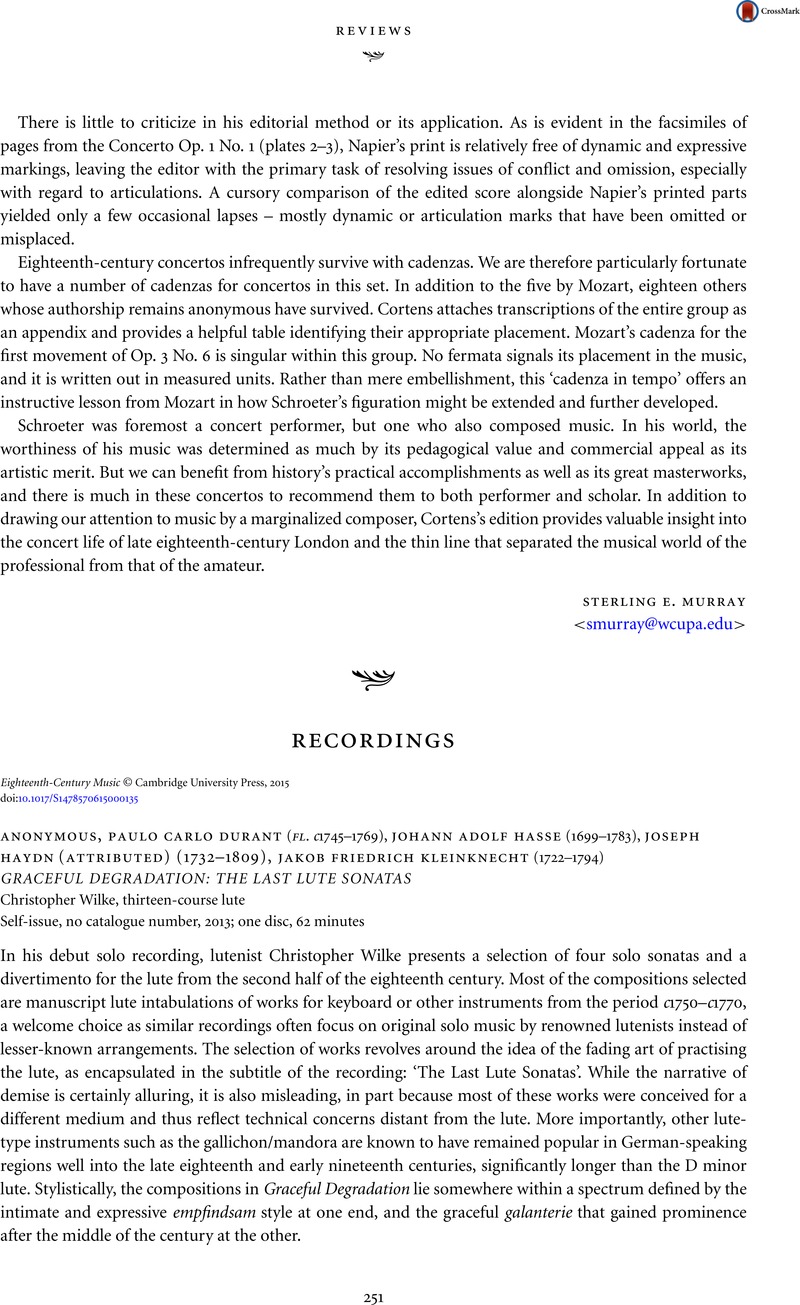No CrossRef data available.
Article contents
ANONYMOUS, PAULO CARLO DURANT (fl. c1745–1769), JOHANN ADOLF HASSE (1699–1783), JOSEPH HAYDN (ATTRIBUTED) (1732–1809), JAKOB FRIEDRICH KLEINKNECHT (1722–1794) GRACEFUL DEGRADATION: THE LAST LUTE SONATAS Christopher Wilke, thirteen-course lute Self-issue, no catalogue number, 2013; one disc, 62 minutes
Review products
ANONYMOUS, PAULO CARLO DURANT (fl. c1745–1769), JOHANN ADOLF HASSE (1699–1783), JOSEPH HAYDN (ATTRIBUTED) (1732–1809), JAKOB FRIEDRICH KLEINKNECHT (1722–1794) GRACEFUL DEGRADATION: THE LAST LUTE SONATAS Christopher Wilke, thirteen-course lute Self-issue, no catalogue number, 2013; one disc, 62 minutes
Published online by Cambridge University Press: 24 August 2015
Abstract
An abstract is not available for this content so a preview has been provided. Please use the Get access link above for information on how to access this content.

Information
- Type
- Reviews: Recordings
- Information
- Copyright
- Copyright © Cambridge University Press 2015

